Based in
Italy
Photographed in
Italy
The ex MOI was an housing occupation of Turin born on March 30, 2013 inside the buildings of the Olympic Village built for the 2006 Winter Games and then abandoned and left unused. Considered the biggest occupation of migrants and asylum seekers in Europe, it has hosted more than 1400 refugees from 28 different countries in Africa. Many of them arrived in Italy because of the war that broke out in Libya in 2011, following the end of Piano Emergenza Nord Africa found themselves on the street without future prospects and the impossibility of leaving the country.
During the years of occupation, this community has equipped itself to live with dignity by opening various activities inside the buildings. Within the spaces, a group of volunteers has also opened a series of counters to support the inhabitants. Among them a health counter operating twice a week and managed by Doctors Without Borders.
The ex MOI was a city within a city. A place animated by a form of self subsistence and mutual help, where the inhabitants have lived a life in a purgatory searching for a job and a bureaucratic regularisation for some of them never arrived.
I spent just over three years in this place that has become my home. I went from being a photographer to being a volunteer and then again a witness of this huge, complex, wonderful community. In every word I heard, I found an infinite greatness and boundless prayer. A determination that has often been difficult for me to understand. The ability to resist in an exhausting wait. For the first time in my life, in this colorful city that many people have preferred to forget, I met in person the meaning of the word: resilience.
At dawn on July 30, 2019 the last two buildings have been cleared out and it’s all over. I closed my eyes for a moment in that courtyard full of doubts and voices. Of all the words, those of a friend have hit my heart harder: “I’m on that boat. I’ve never been down. I’m still on that boat.”
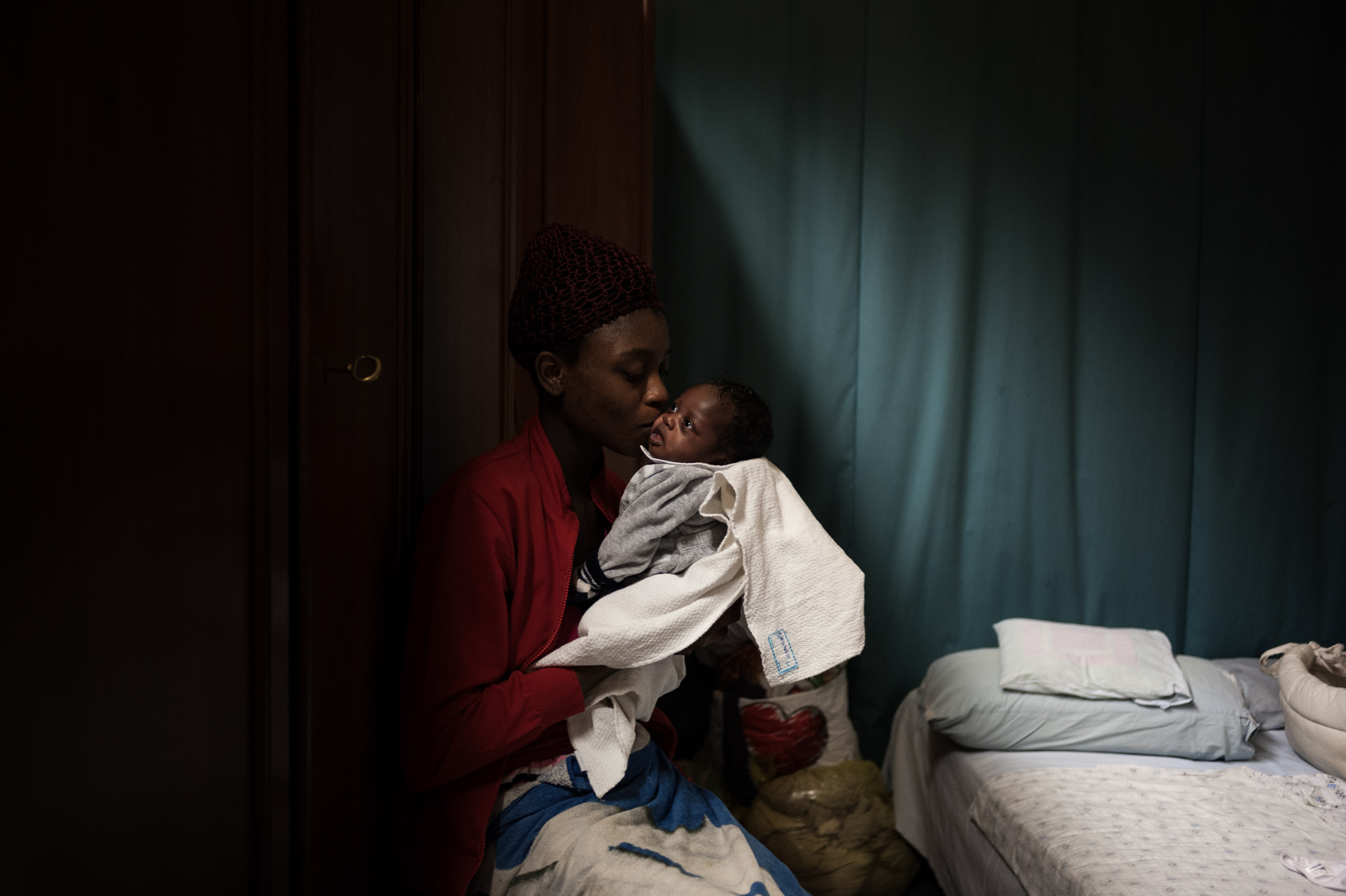
Angela comes from Nigeria. At the end of December 2017 she gave birth to her first child Gift, at the neonatal unit of Sant’Anna hospital in Turin. The group of Doctors Without Borders who manage the Ex MOI medical advice centre and an obstetrician working at Sant’Anna took care of her while she was pregnant. Back in her room on the ground floor of one of the Ex MOI buildings, Angela can finally take care of her daughter.
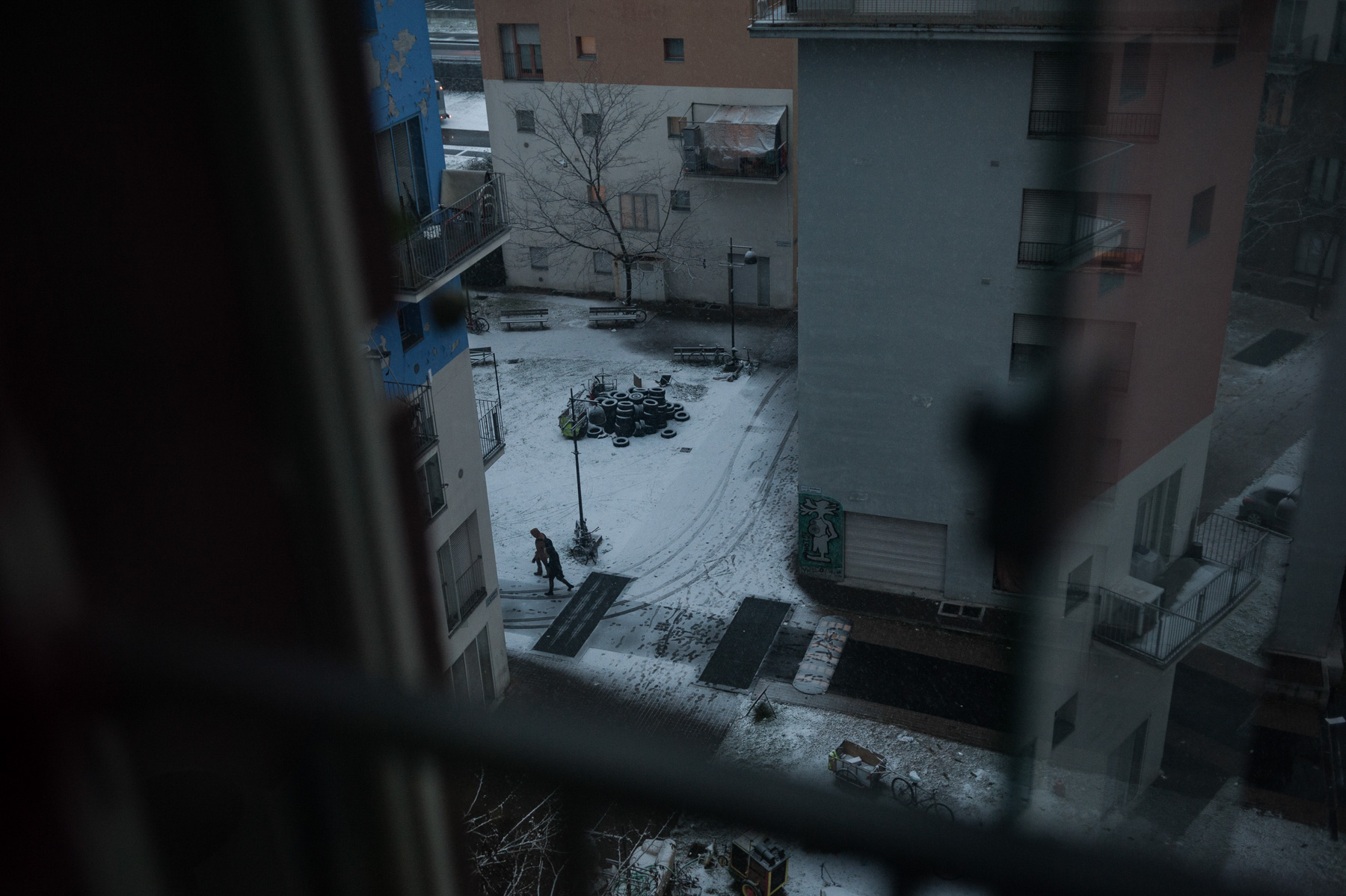
A view of the central courtyard from one of the windows of the orange building during the winter of 2017. The entire housing complex was built hastily, with low quality materials and was abandoned after the end of the Winter Olympics. The City of Turin has never given it a new destination.
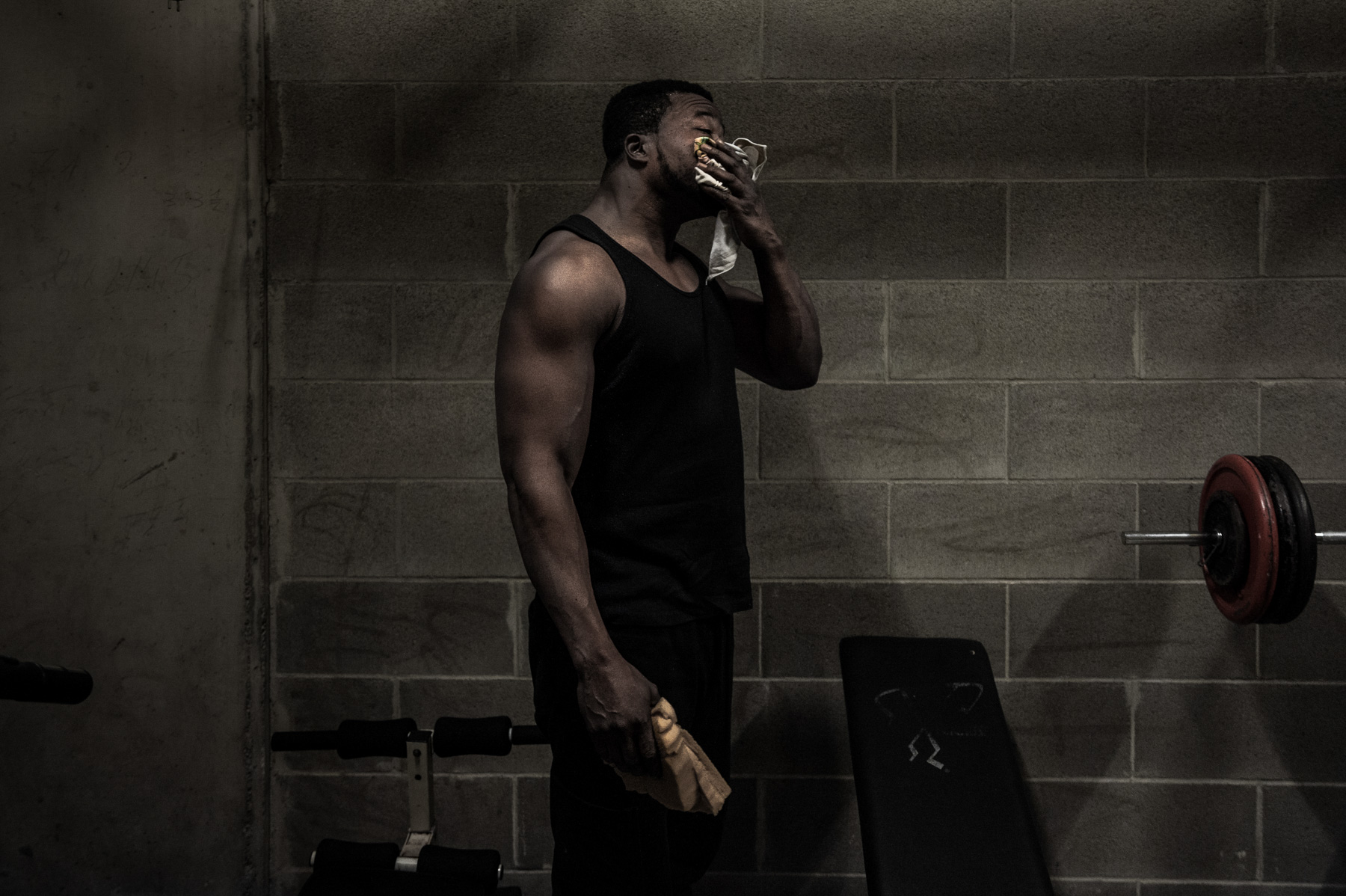
Albert was born in Accra, Ghana. He is a former boxing and judo coach. In 2015, he set up a small gym in the basement of the orange building. He trains every day, after getting back from work. He is quite fluent in Italian, but he keeps studying it because he wants to obtain a middle school diploma. The gym is open to everyone and, even though it is tiny, many residents use it regularly.
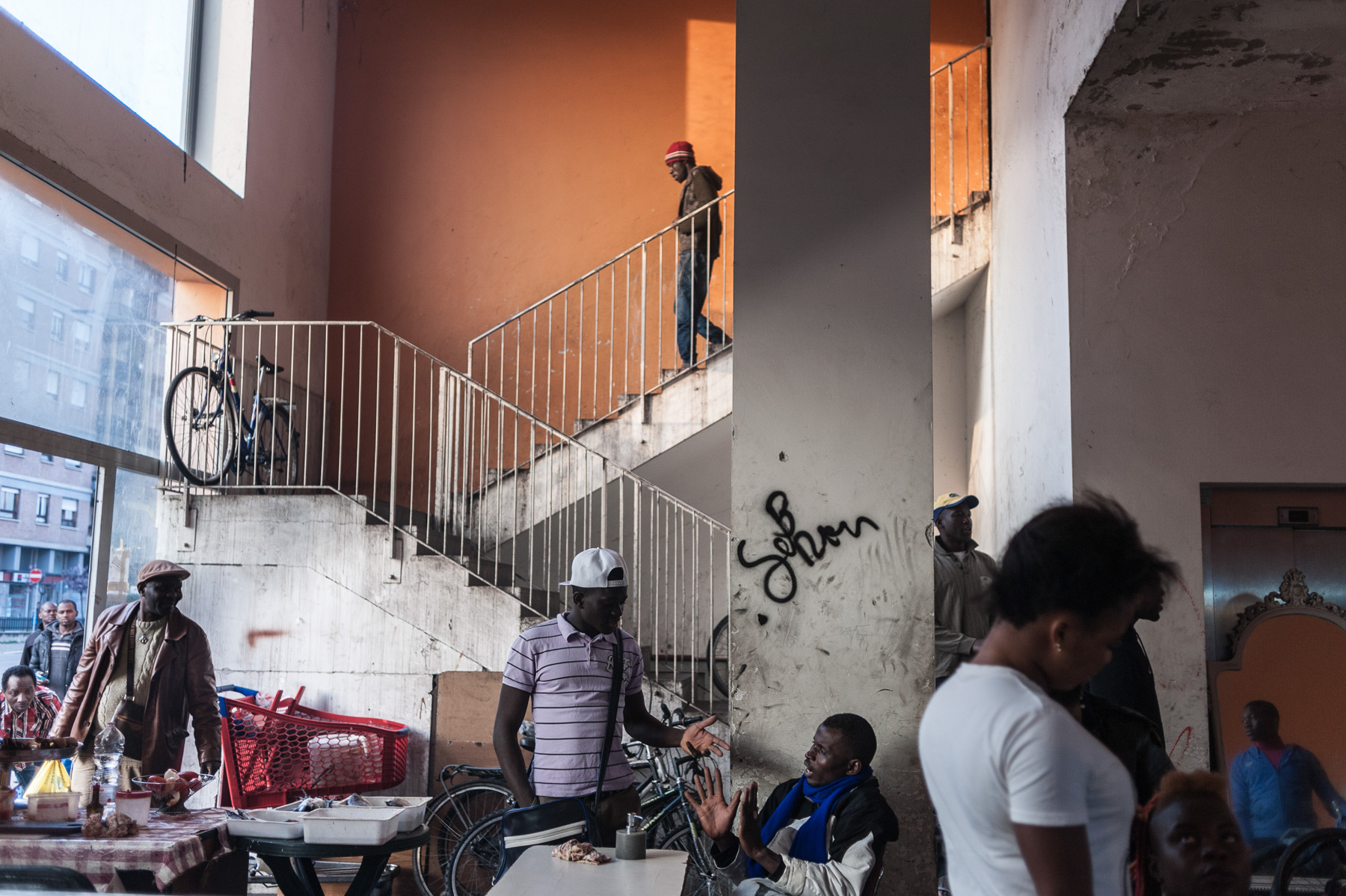
In 2017, the Ex MOI host about 1,400 migrants and refugees from 28 different countries in sub-Saharan Africa. The Somalis make up the largest community. At the beginning of the occupation, living together proved difficult due to deep ethnic differences, but things have changed a lot and today the occupants are doing their best to support each other.
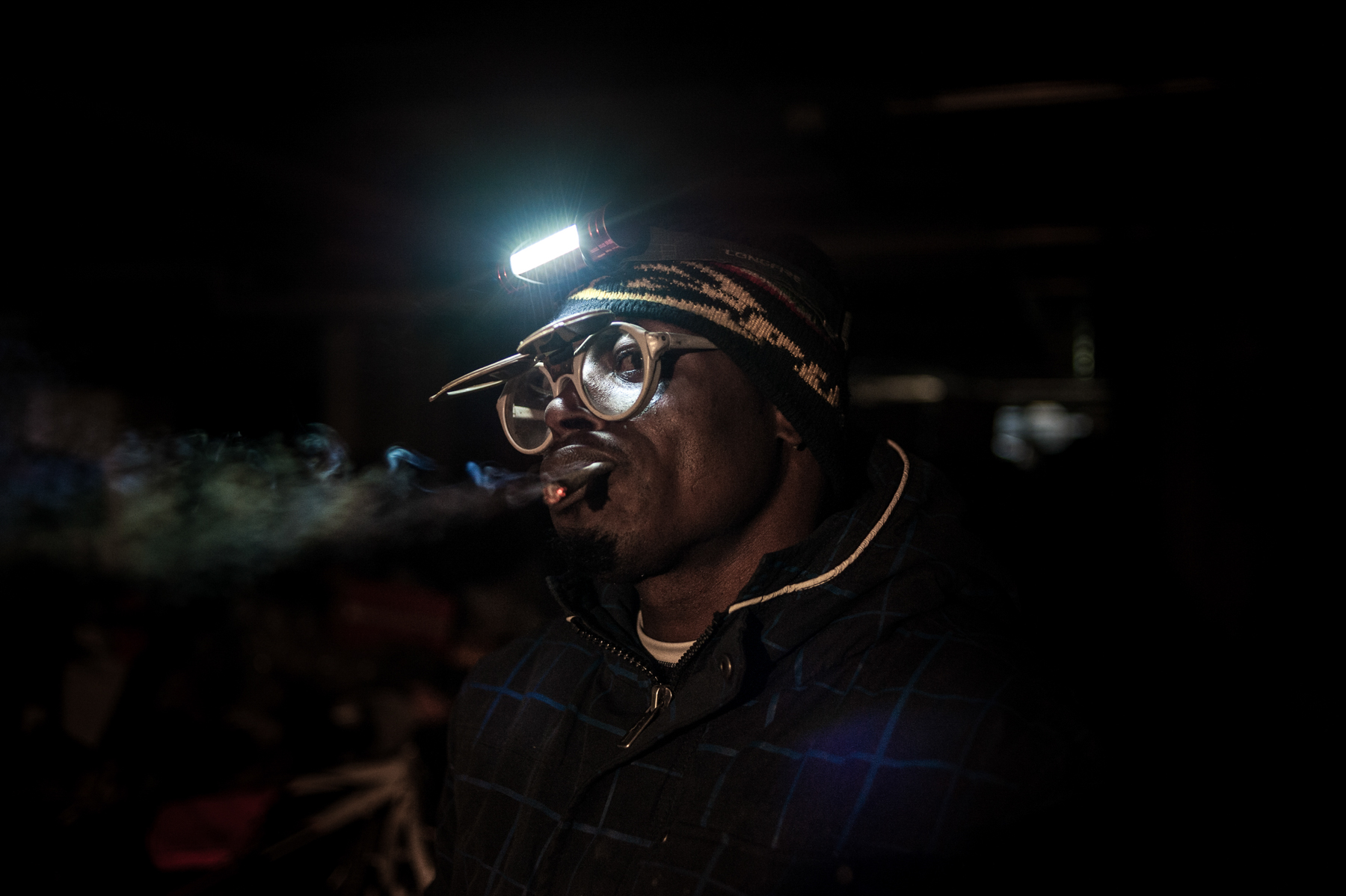
Abdallah is a smith. That is what he did for a living in Libya and that is what he does at Ex MOI. He lives in an area of the basement, where he also has his workshop. He often repairs the carts of the residents who have taken to scrap-metal dealing. They go around the city at night collecting scrap metal that can be reused and any object they find near the skips that can be somehow recycled
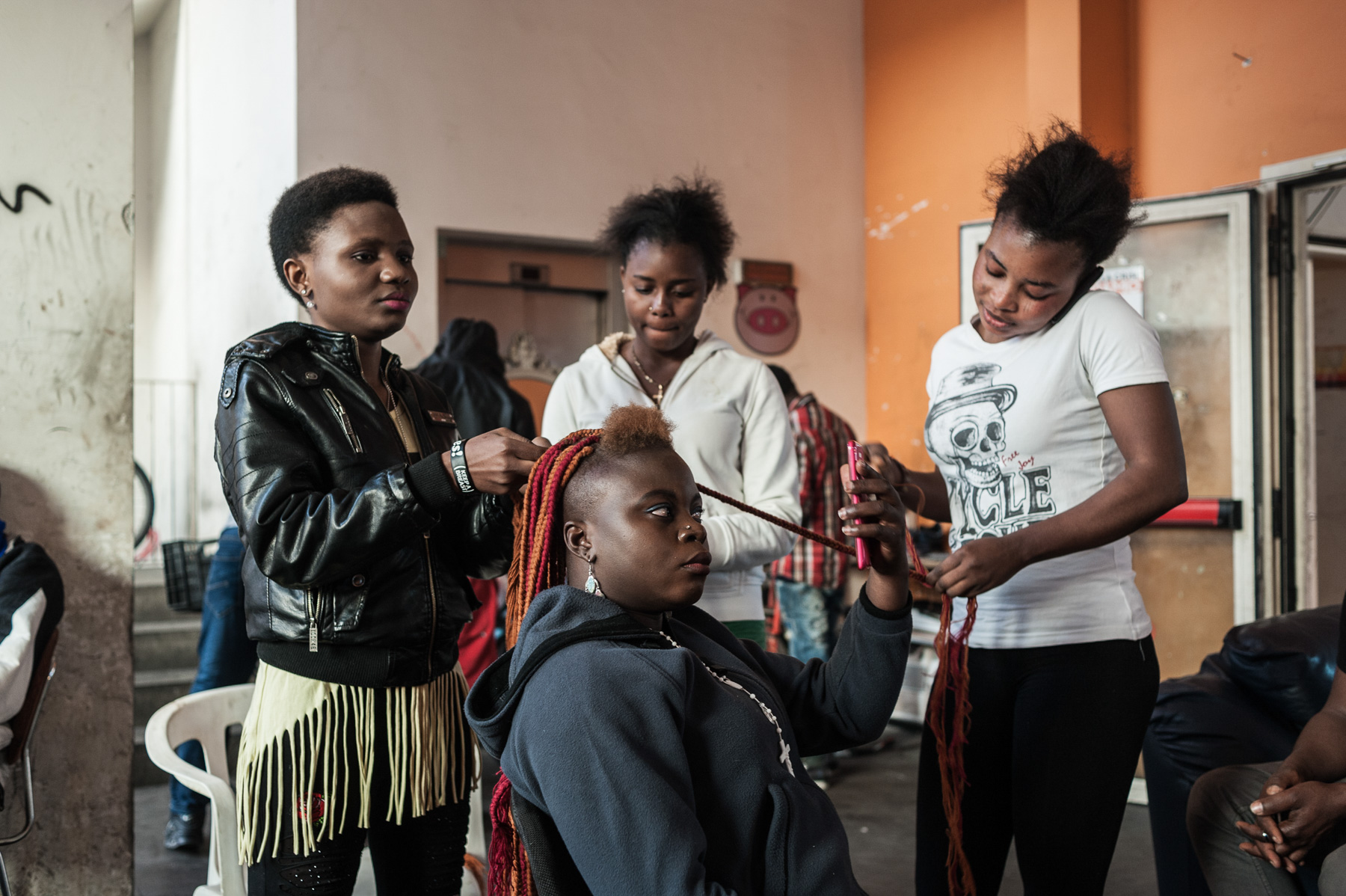
A group of Nigerian girls at the first floor of the orange building, tidying up their hair. African braiding style started in the streets and consists in braiding hair with colored cotton threads. It is inspired by North-African hand-crafted fabrics, with their strong colors, and North-African hair-styles.
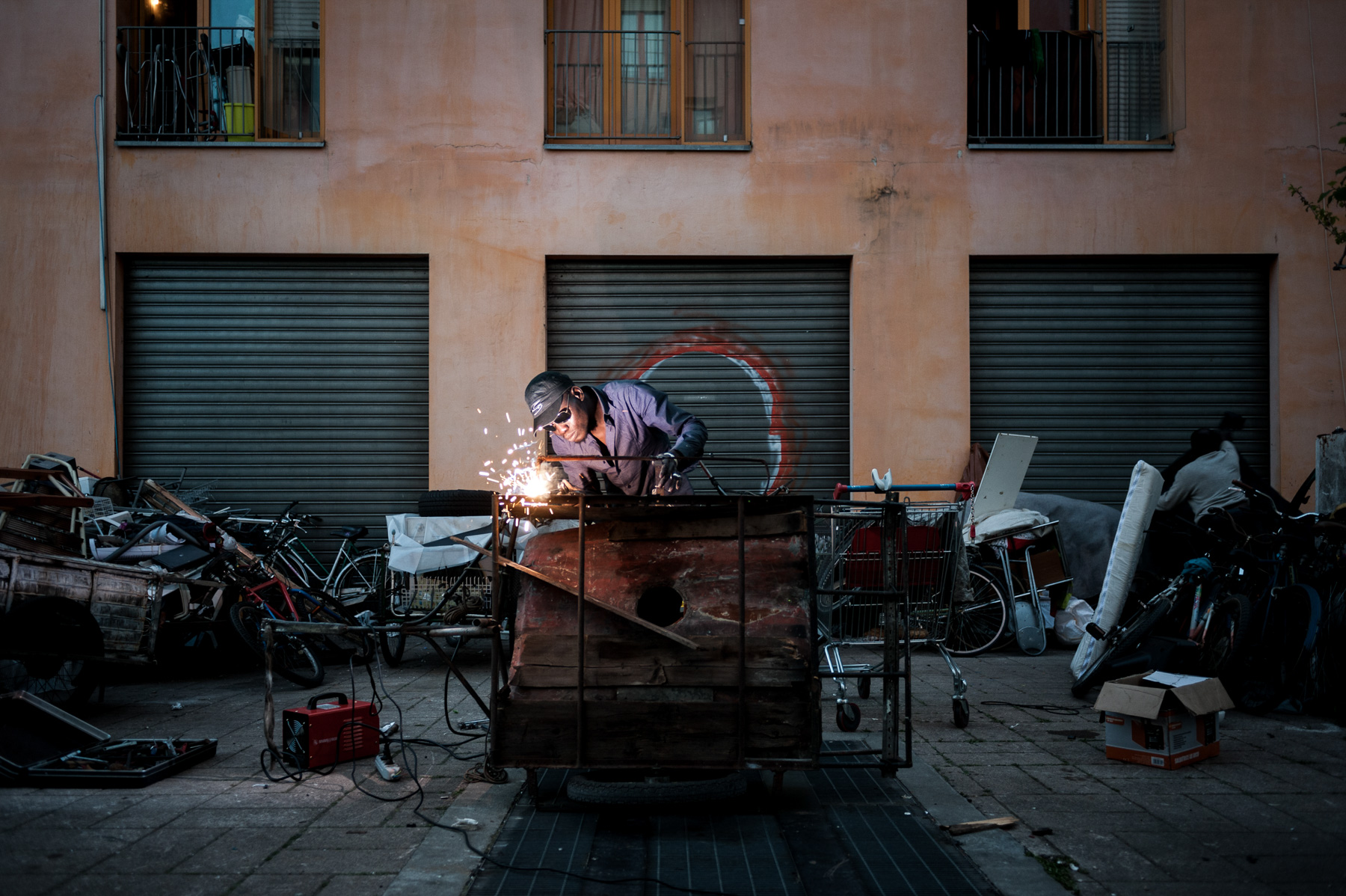
Mohammed one of the carters. After the eviction of the basements, much material that had accumulated in the underground was piled up in the courtyard between the buildings occupying all the space where people used to gather to play football. He is repairing his cart.
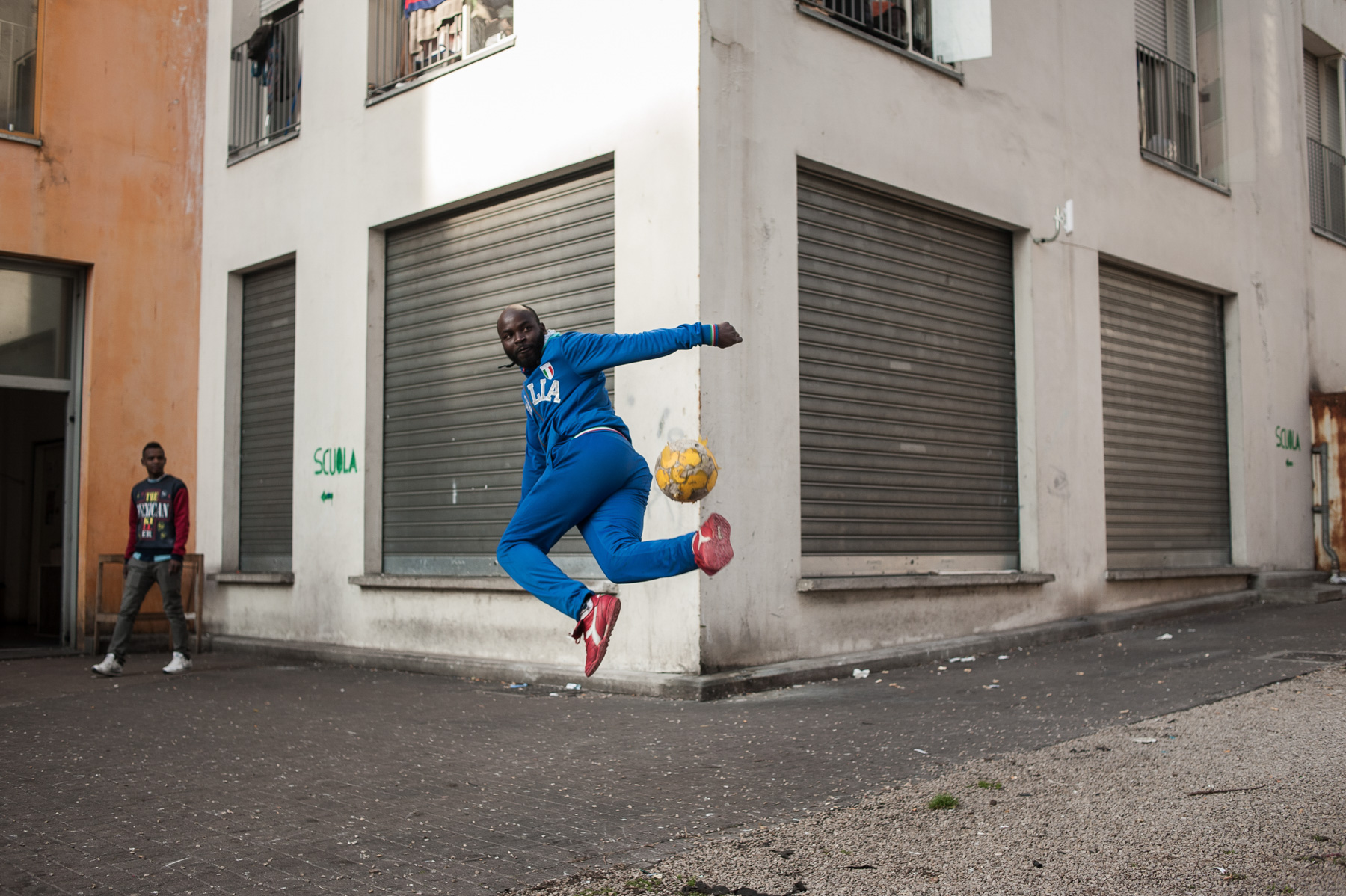
Diallo is a tailor, a cooker and a keen football player. His workshop, where he also sleeps, is on the ground floor of the orange building, the most crowded of the four Ex MOI buildings. He cooks pretty much for anyone and for two euros he serves a plate of domodah, a traditional Gambian dish with rice, meat and peanut sauce.
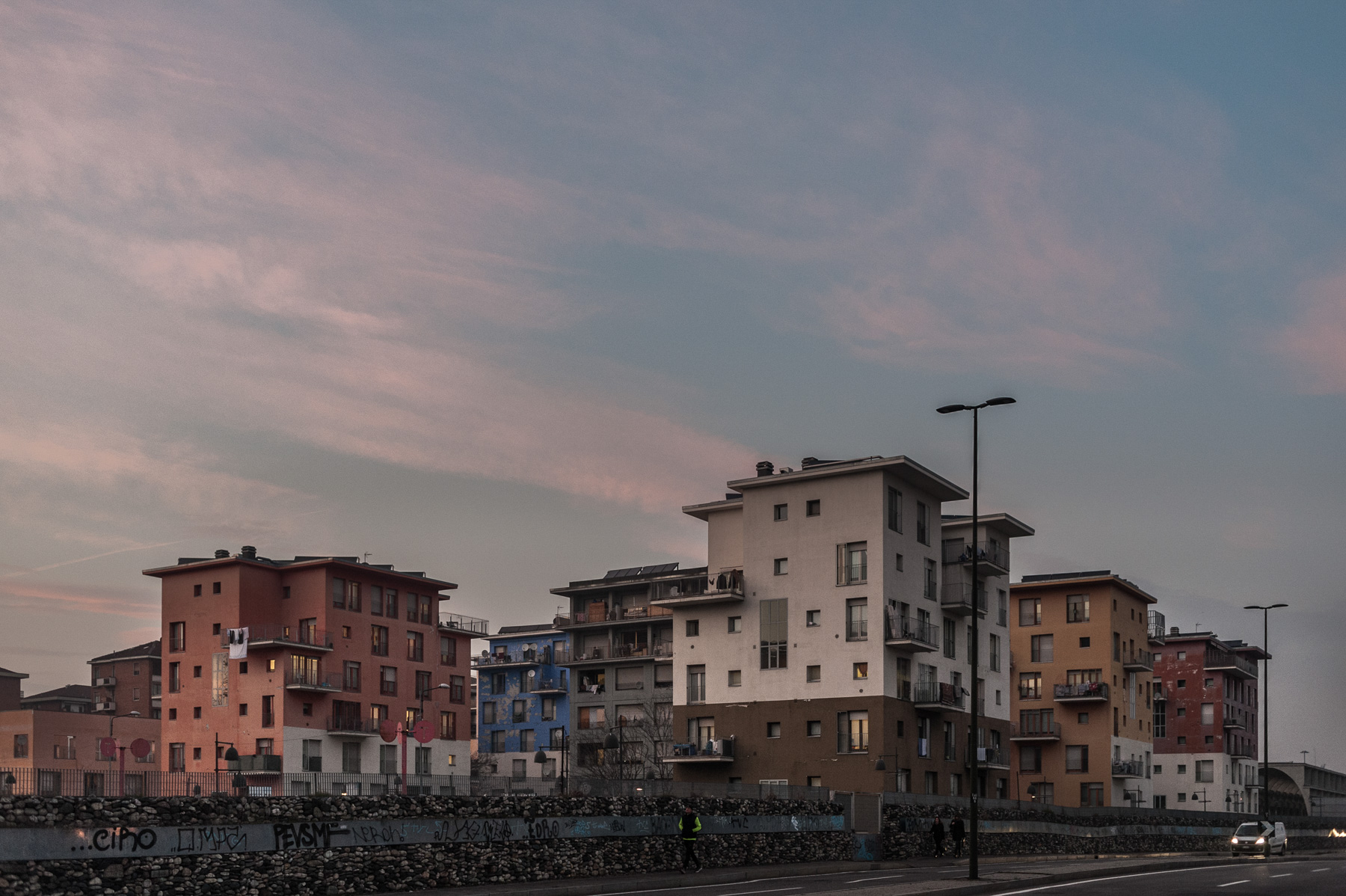
The Ex MOI has always been a problem for the Turin municipality. No administration has proved capable of dealing with this complex and delicate situation. The occupation has been fiercely criticized by extreme right-wing political groups, which have always asked the eviction of the occupants without caring for their needs. Actually, though, Ex MOI is a city within a city, a place where hundreds of lives intertwine, merge and blend, creating a cultural landscape of rare beauty. The view of the entire complex from the road adjacent to the train station of Lingotto.
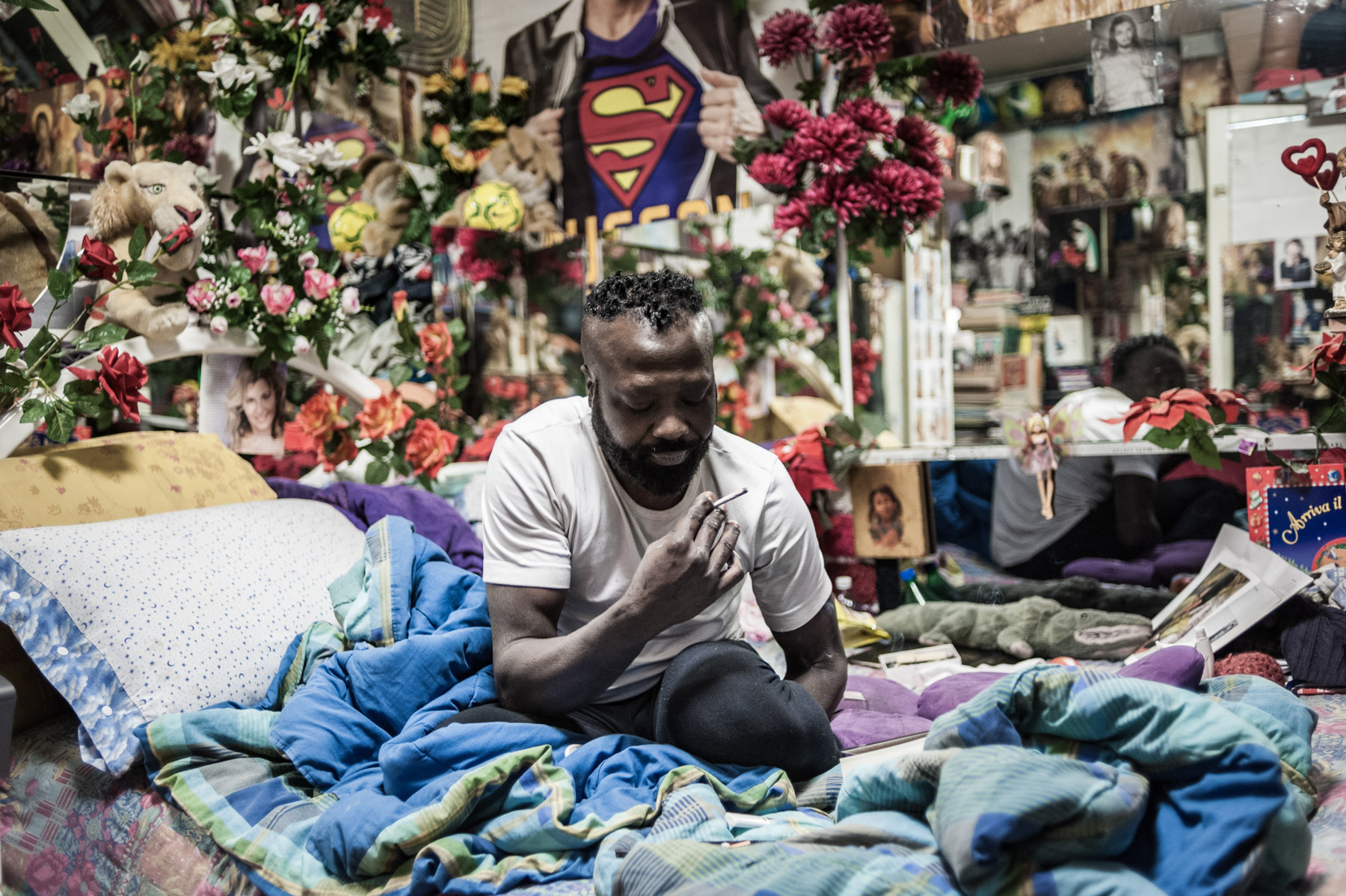
Samuel is a friend, a prophet and an avid reader. I spent much of my time with him at Ex MOI, talking about everything. Many times he has told me his personal odyssey, the long journey after which all his hopes were wrecked. He lives in this room crammed with keepsakes and reminders, where every single object has its precise meaning and place.
